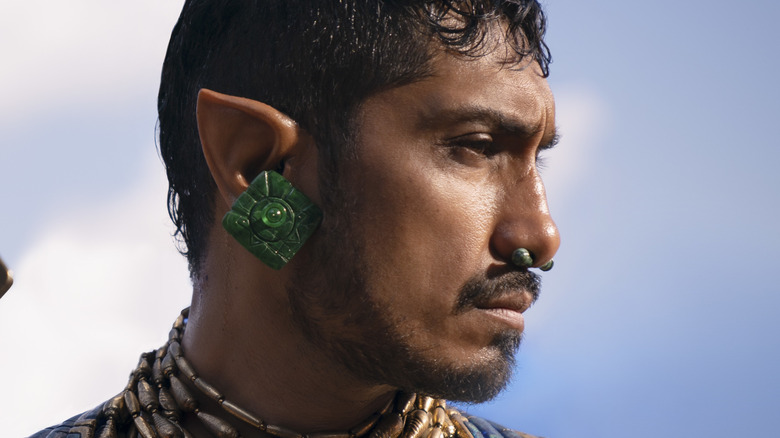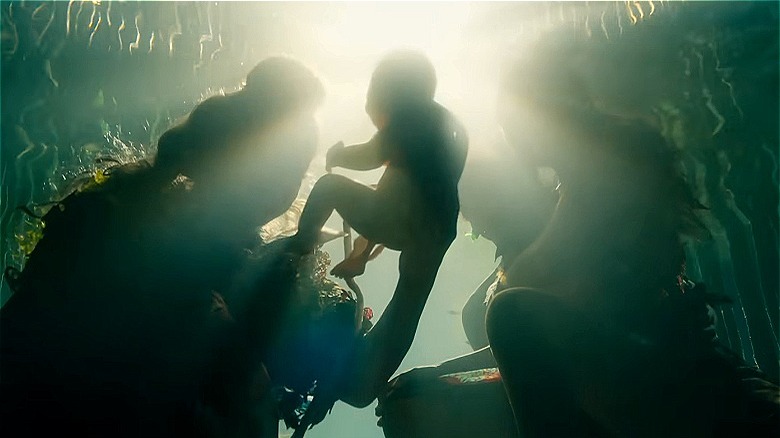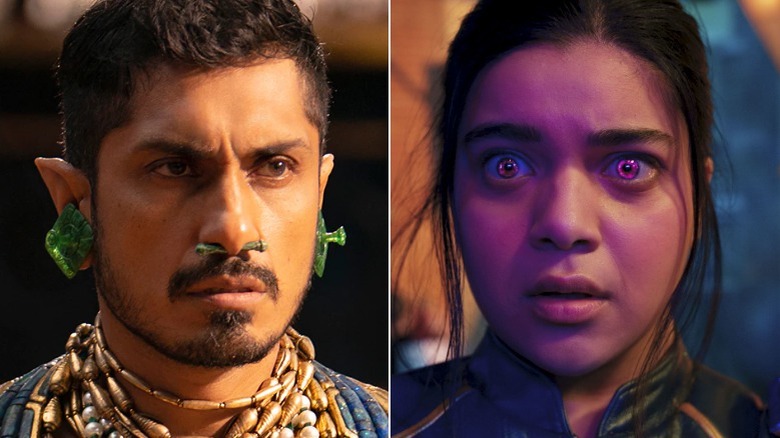Wakanda Forever's Namor Origin Complicates What We Know About Mutants
Contains spoilers for "Black Panther: Wakanda Forever"
In the comics, Namor has a history that's as complex as his powers. He's spent most of his time in the comics treading water on the line between good and evil — starting as a hero, then becoming an Avenger. However, one detail regarding Namor's background is that he is confirmed as the first ever mutant, the advanced human sub-species with special powers. Yes, believe it or not, the terror in trunks causing issues for everyone's favorite secret nation is in the same category as the likes of Charles Xavier, Jean Grey, and Wolverine. This character element has stayed integral to Namor for some time now, with audiences expecting to be what ushers in a major new era in the MCU.
In "Wakanda Forever," such matters are addressed briefly, with the 'M' word even being used by Namor (Tenoch Huerta) to explain where he got his amphibian-like features and feathered feet accessories to match. It separates him from his people, who see him as a god and a threat to Shuri (Letitia Wright) and Wakanda's defenders. With that said, just how he got his mutation is an exciting alteration that could lead to a very different introduction to what fans are used to regarding the mutant race. It might not line up perfectly with the comic books, but it might not come as much of a surprise given what other mutants we've been recently introduced to and encountered going forward.
Wakanda Forever plants the seeds of how mutants will enter the MCU
In the comics, Namor shares a similar origin to DC's Aquaman, as the child of a human father and an Atlantean princess mother, which allows him to live on both land and sea. His winged feet have no link to either side of his parents and are, in fact, his specific mutation. This, along with his long lifespan in Marvel's history and confirmation by essential figures like Charles Xavier, makes him known to many as "Namor: The First Mutant" (via Fandom). However, in the case of the MCU's Namor, his origin story is drastically different and grows similarly to how Wakanda empowers its Black Panther.
Huerta's Namor is given his superpowered traits through his mother and her actions before he was born to avoid smallpox. By eating a plant that grew in vibranium-infused soil, its side effects forced her and Namor's people into the sea, which they eventually learned to inhabit successfully. As Namor tells it, this led to his skin not turning blue when he left the water and gaining winged feet and ears that "pointed to the heavens." While it's acceptable enough (in this world, at least) that this is the reason for Namor's abilities, another recently confirmed mutant suggests that the plant was the catalyst and not the cause of his powers. For reference, we need to head to New Jersey to compare notes.
Does an X-ternal factor help awaken the X-gene in MCU characters?
While there's nothing to say that it was all the plants doing for Namor to end up the way he is, we need only look at Kamala Khan's (Iman Vellani) revelation in the "Ms. Marvel" finale to see that there may be something more to it. Throughout that series, it was implied that her great-grandmother's bangle gave Kamala her abilities, putting her on the path to becoming her super alter-ego. That was until Bruno (Matt Lintz) came across what he referred to as "a mutation" (cue "X-Men" theme), which allowed Kamala to react to her newly discovered accessory. If it took a bangle to bring the X-Factor out of Kamala, why can't a plant do the same for Namor?
Adding a unique and varied ingredient for any future mutant appearances would help explain why none have been discovered up until now. Doing so would also provide a paced portion of superhumans to come forward rather than a Blip-level event that sees the MCU suddenly inhabited by a mass population of mutants out of nowhere. Either way, this is undoubtedly another slow step before, as Professor X would say, evolution in the Marvel Cinematic Universe leap's forward.


